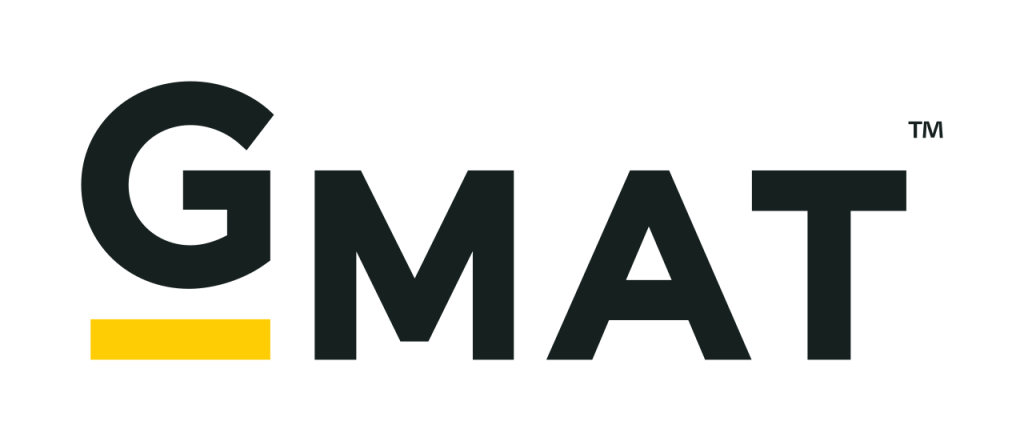GMAT stands for Graduate Management Admission Test. It is a standardized test designed to measure the skills and abilities necessary for success in graduate-level business and management programs. The GMAT is owned and administered by the Graduate Management Admission Council (GMAC) and is accepted by thousands of business schools worldwide. The test consists of four sections, including Integrated Reasoning, Analytical Writing Assessment, Quantitative Reasoning, and Verbal Reasoning. The exam is computer-adaptive, meaning that the difficulty level of each question is determined by the accuracy of the candidate’s previous answers. The total test duration is 3 hours and 30 minutes, and the score is valid for up to five years.

GMAT Syllabus
The GMAT exam measures the test-taker’s abilities in several areas related to business and management. The exam consists of four sections, each testing a specific set of skills.
Here’s a brief overview of the GMAT syllabus:
Analytical Writing Assessment (AWA)
In this section, the test-taker needs to write one essay within 30 minutes. The essay should analyze an argument and provide a critical evaluation of it.
Integrated Reasoning (IR)
This section consists of 12 questions to be completed within 30 minutes. The questions test the test-taker’s ability to analyze and synthesize data from different sources, including tables, graphs, and text.
Quantitative Reasoning (QR)
The QR section consists of 31 multiple-choice questions to be completed within 62 minutes. The questions test the test-taker’s mathematical abilities, including algebra, geometry, and arithmetic.
Verbal Reasoning (VR)
The VR section consists of 36 multiple-choice questions to be completed within 65 minutes. The questions test the test-taker’s language skills, including reading comprehension, critical reasoning, and sentence correction.
Overall, the GMAT syllabus is designed to test a wide range of skills that are necessary for success in graduate-level business programs.
GMAT Exam Pattern
Here’s the GMAT exam pattern
Section |
Number of Questions |
Time Allotted |
|---|---|---|
| Analytical Writing Assessment | 1 (Essay) | 30 minutes |
| Integrated Reasoning | 12 | 30 minutes |
| Quantitative Reasoning | 31 | 62 minutes |
| Verbal Reasoning | 36 | 65 minutes |
| Total | 80 | 3 hours, 7 min |
Note: The total time allotted for the exam is 3 hours and 7 minutes. There are two optional breaks of 8 minutes each, one after the Integrated Reasoning section and the other after the Quantitative Reasoning section.
Important Topics & Weightage – Analytical Writing Assessment (AWA)
Here are the important topics and weightage for the Analytical Writing Assessment (AWA) section
Topics |
Weightage |
|---|---|
| Analysis of Argument (Essay) | 100% |
Note: The AWA section consists of one essay prompt, and the test-taker is required to write an analysis of the argument presented in the prompt. The essay is scored on a scale of 0-6 by two independent readers, and the final score is the average of the two scores. The AWA score does not contribute to the overall GMAT score, but it is sent to the business schools to which the test-taker applies.
Important Topics & Weightage – Integrated Reasoning (IR)
Here are the important topics and weightage for the Integrated Reasoning (IR) section:
Topics |
Weightage |
|---|---|
| Multi-Source Reasoning | 33% |
| Table Analysis | 33% |
| Graphics Interpretation | 33% |
| Two-Part Analysis (Sub-Section of Multi-Source) | N/A |
Note: The Integrated Reasoning section consists of 12 questions of different types, and the test-taker is allotted 30 minutes to complete the section. The questions are designed to test the test-taker’s ability to analyze and synthesize data from multiple sources, including tables, graphs, text, and sometimes video. The Two-Part Analysis question is a sub-section of the Multi-Source Reasoning question and does not have a separate weightage.
Important Topics & Weightage - Quantitative Reasoning (QR)
Here are the important topics and weightage for the Quantitative Reasoning (QR) section:
Topics | Weightage |
|---|---|
| Arithmetic | 20% |
| Algebra | 15% |
| Geometry | 20% |
| Word Problems | 15% |
| Data Sufficiency | 30% |
Note: The Quantitative Reasoning section consists of 31 multiple-choice questions, and the test-taker is allotted 62 minutes to complete the section. The questions are designed to test the test-taker’s mathematical abilities, including arithmetic, algebra, and geometry, as well as their ability to solve word problems and interpret data. The Data Sufficiency questions test the test-taker’s ability to determine whether the information provided is sufficient to solve a given problem.
Important Topics & Weightage - Verbal Reasoning (VR)
Here are the important topics and weightage for the Verbal Reasoning (VR) section:
Topics |
Weightage |
|---|---|
| Reading Comprehension | 45% |
| Critical Reasoning | 30% |
| Sentence Correction | 25% |
Note: The Verbal Reasoning section consists of 36 multiple-choice questions, and the test-taker is allotted 65 minutes to complete the section. The questions are designed to test the test-taker’s language skills, including their ability to read and comprehend written material, analyze and evaluate arguments, and correct written material for errors in grammar, punctuation, and usage. The Reading Comprehension questions test the test-taker’s ability to read and understand complex passages and answer questions related to them. The Critical Reasoning questions test the test-taker’s ability to analyze arguments and draw logical conclusions. The Sentence Correction questions test the test-taker’s ability to identify and correct errors in written sentences.



















